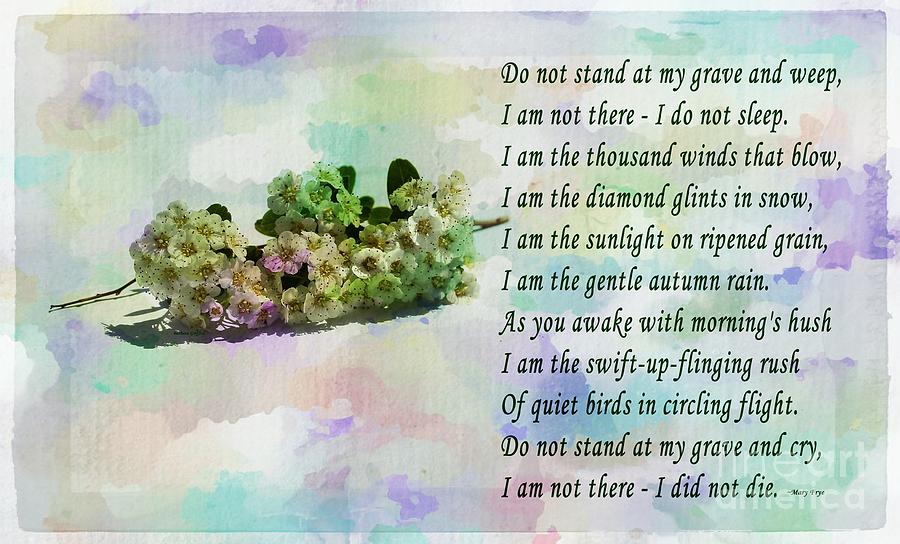At life’s end, the mortal body may fade, but the essence of a soul transcends the boundaries of flesh and time. Do Not Stand at My Grave and Weep, a poignant message etched in words of comfort and remembrance, echoes through the corridors of time, offering solace and peace to grieving hearts. Composed by the renowned Victorian poet Mary Elizabeth Frye in 1932, this timeless poem has become an anthem for those seeking solace amidst loss, a beacon of hope amid the shadows of sorrow.

Image: fineartamerica.com
Mary Elizabeth Frye, an educator and writer, penned this poem in the depths of grief following the loss of a close friend. Published posthumously in 1971, Do Not Stand at My Grave and Weep found an instant resonance with countless individuals across generations, transcending cultural and geographical barriers. Its verses, imbued with both fragility and strength, invite a gentle release from the anguish of loss, acknowledging the eternal connection that binds the living to the departed.
An Ode to the Ephemerality of Life and Beyond
The poem opens with a plea, a heartfelt request to refrain from mourning at the physical resting place of the speaker. It is a gentle reminder of the transience of life, the inevitable journey we all must take. As the body returns to the earth, the spirit embarks on a different path.
In the second stanza, the speaker paints a vivid tapestry of the natural world, teeming with life and beauty. The wind whispers secrets, the birds soar through the sky, and nature’s symphony envelops the soul. These elements become vessels of the departed, their essence forever intertwined with the rhythms of existence.
The third stanza offers a comforting embrace, a gentle assurance that the departed soul resides not in the confines of a tomb but in the hearts and memories of those who loved them. Love transcends the boundaries of physical presence, creating an eternal bond that defies the sorrows of separation.

Image: gayvsera.weebly.com
Do Not Stand At My Grave And Weep
A Tapestry of Loss and Love
Through its delicate yet evocative imagery, Do Not Stand at My Grave and Weep paints a poignant tapestry of loss and love. It acknowledges the profound pain of grief but gently guides us toward a path of acceptance and remembrance.
The poem echoes the ancient wisdom of many cultures, which recognize the cyclical nature of life and death. In the ebb and flow of seasons, the blooming of flowers amidst faded leaves, the circle of life is ever-present.
Love, in its myriad forms, becomes the bridge that connects the living and the departed. It is in the act of loving, of holding memories close to our hearts, that we truly honor the lives of those we have lost.